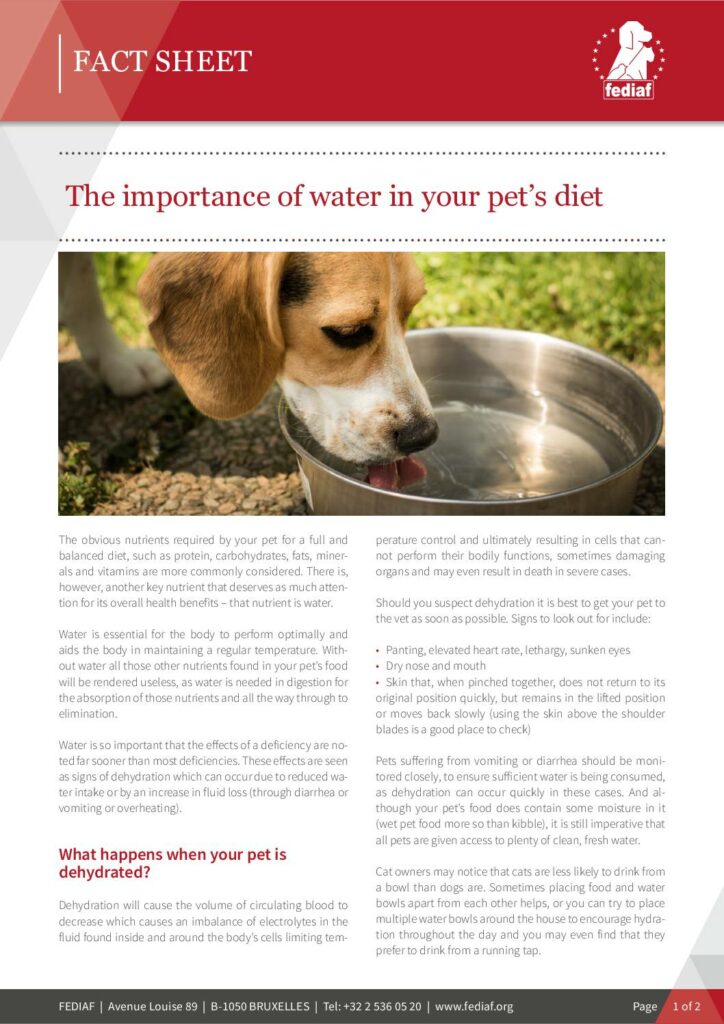The obvious nutrients required by your pet for a full and balanced diet, such as protein, carbohydrates, fats, minerals and vitamins are more commonly considered. There is, however, another key nutrient that deserves as much attention for its overall health benefits – that nutrient is water.
Water is essential for the body to perform optimally and aids the body in maintaining a regular temperature. Without water all those other nutrients found in your pet’s food will be rendered useless, as water is needed in digestion for the absorption of those nutrients and all the way through to elimination.
Water is so important that the effects of a deficiency are noted far sooner than most deficiencies. These effects are seen as signs of dehydration which can occur due to reduced water intake or by an increase in fluid loss (through diarrhea or vomiting or overheating).
What happens when your pet is dehydrated?
Dehydration will cause the volume of circulating blood to decrease which causes an imbalance of electrolytes in the fluid found inside and around the body’s cells limiting temperature control and ultimately resulting in cells that cannot perform their bodily functions, sometimes damaging organs and may even result in death in severe cases.
- Should you suspect dehydration it is best to get your pet to the vet as soon as possible. Signs to look out for include:
- Panting, elevated heart rate, lethargy, sunken eyes
- Dry nose and mouth
- Skin that, when pinched together, does not return to its original position quickly, but remains in the lifted position or moves back slowly (using the skin above the shoulder blades is a good place to check)
Pets suffering from vomiting or diarrhea should be monitored closely, to ensure sufficient water is being consumed, as dehydration can occur quickly in these cases. And although your pet’s food does contain some moisture in it (wet pet food more so than kibble), it is still imperative that all pets are given access to plenty of clean, fresh water.
Cat owners may notice that cats are less likely to drink from a bowl than dogs are. Sometimes placing food and water bowls apart from each other helps, or you can try to place multiple water bowls around the house to encourage hydration throughout the day and you may even find that they prefer to drink from a running tap.
Daily drinking water requirement for dogs (ml/kg of body weight) when fed on:
| Dry food | Wet food | ||
| Ambient temperature | < 20°C | 40-50 | 5-10 |
| High temperature | > 20°C | 50-100 | 20-50 |
| High physical activity | < 20°C | Up to 100 | Up to 50 |
| High physical activity | 20°C | Up to 150 | Up to 100 |
